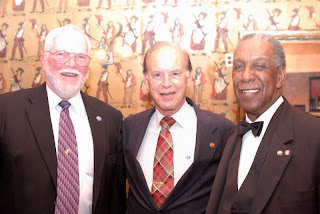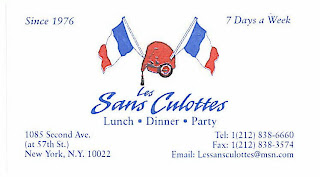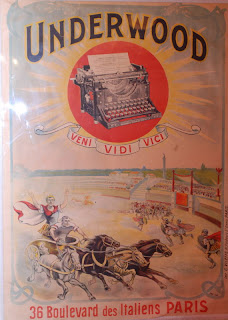
And speaking of Masonic research and education, the Scottish Rite Research Society made available this afternoon its previous volumes of “Heredom,” the annual book of the Society’s transactions. These books have been available for retail sale through the Society’s website at $35 each (and sometimes for higher prices in the second-hand market, like eBay), but because storage space is needed, these books will be sold for only $10 each.
Specifically those for sale in this offer are Volumes 3-10 and Vol. 12. The offer is valid through Dec. 1, but these are limited quantities that I think will sell briskly. It was announced originally in “The Plumbline,” the Society’s newsletter, that sales would be made to SRRS members only (who would have to enter their membership numbers), but that does not appear to be the case at the moment.

And speaking of “Heredom,” Vol. 15 for 2007 was released this month, consisting of a dozen papers that sound very interesting, and the three I’ve read so far are thoughtful and provocative.
Leading the charge is Joshua Gunn, 32°, who is an assistant professor of communications studies at the University of Texas at Austin, and author of “Modern Occult Rhetoric: Mass Media and the Drama Secrecy in the Twentieth Century,” published in 2005. His paper in “Heredom” is titled “The Two Rhetorics of Freemasonry, or On the Function & Necessity of Masonic Secrecy,” which I take to be a précis of his aforementioned book. He also has written on this subject for the “Scottish Rite Journal.”
His thesis, if I understand correctly, is a negative view of the contortions undertaken by Freemasonry – er, excuse me, by regular Freemasonry – to render itself more marketable to the public, at the expense of the very same secrecy of Masonic ritual and symbol that helps unify the fraternity. Yes, the author is aware that Masonic “secrets” are published, accurately and inaccurately, all over the web and in countless books, but his point concerns “the function of secrecy” in the fraternity. He eschews the denial of secrecy, as in the now popular insistence that Masonry’s ceremonies are “private” but not secret, and goes as far as naming names of those he faults for downplaying the mystery of Freemasonry.
In short, his dichotomy is Why swear a man to secrecy as a means of bonding him to the others in the fraternity (as in “What makes you a Mason?”), and then present the fraternity to the public as just another cute little community service club that undertakes no serious effort to impart any moral, spiritual, psychological, etc. transformation of these men?
I agree with Gunn 100 percent, but for the following reasons methinks he doth protest too much.
Christopher Hodapp and S. Brent Morris are among Gunn’s targets for their authoring, respectively, of the popular sellers “Freemasons for Dummies” and “The Complete Idiots Guide to Freemasonry.” I know for a fact that neither author views his readers as dummies or idiots, and it is regrettable that their critics are oblivious to the self-deprecating point of those publishers’ titles.
I can’t say Gunn’s thesis is wrong. When our grand masters take to their podiums to say “The real secret of Freemasonry is there IS no secret,” I leave the room. I know, as does Gunn, that the key to building membership smartly relies in large part on our ability to entice men with what Lord Northampton calls “the enchantment of Masonry.” My disagreement with Gunn concerns his findings; I believe I recognize in his paper an oversight of certain facts in Masonic history. I’ll explain with a few examples:
The Masonic fraternity we know today took its form – I’m talking about Craft lodges subordinate to a grand lodge, and employing the three-tier system of initiation – around 1730, the very same year Samuel Prichard published his ritual exposure “Masonry Dissected.” So, we have the publication of Masonic “secrets” at the very start of the fraternity’s revival, with many more exposures to follow during the next century. Concurrent to all this, countless other books and pamphlets would be published about Freemasonry; whether these texts were supportive of, combative toward or mocking thereof, they had the effect of enhancing the stature of the Fraternity.
Fast forward a century and a half: “Esoterika” written by Albert Pike in 1888 (and reprinted by the SRRS in 2005) gives another view of how the mysteries of Masonry were communicated, or not. Pike writes:
“My faith in the value of Masonic symbolism had been rudely shaken at the very beginning, by the explanation in the Apprentice’s Degree of the purpose for which I had been subjected to the gross indignity of having a halter knotted round my neck, though it was called by the more euphonious name of ‘cable-tow’ and it seemed to me that I had heard and read all the monitorial explanations, that most of the symbolism was of the nature of that of a bush over the door of a wine shop.
“Of some things that I saw and heard, no one could give me an explanation at all; and indeed, it did not seem ever to have occurred to some of those of whom I asked light that they had any special signification. No one could tell me what the length of a cable-tow was, or the symbolic meaning of the halter round the neck. No one had thought that there was any special meaning in the sacred numbers, in the pass words, in the substitute word, or in certain phrases.
“And no one could resolve my doubts and difficulties. Of course I could learn nothing in the Lodge. No one ever learns anything there, in regard to the meaning of the symbols, after he has received the degrees. If he desires to know more, which most Masons do not, he must seek to find it in books printed to be sold to anyone, Mason or profane, who may wish to purchase; and these I bought and eagerly read, finding here and there among the rubbish of useless writing, a clue now and then, which lead me towards the truth.”
So we have a problem if we are to blame modern interpretations of Masonry for the fraternity’s blandness and the ignorance of its members. If anything, Prichard’s exposure (and the many subsequent exposures, except I suppose, Morgan’s) had the positive effect of providing the brethren a book to study, through which to gain an understanding of these peculiar ceremonies. Masonry didn’t lose its significance as a result; in fact, it flourished and spread around the world.
In more recent times, I can attest as an eyewitness that one night last December scores of Masons, many of whom I would not know to be voracious readers, if you know what I mean, lined up and patiently waited for more than an hour for the chance to purchase Chris Hodapp’s “Dummies” book. I saw the same thing occur two months later in Virginia at Masonic Week, except Chris was kept busy for several days.
Not to be a wise guy, but I’ll point out that Prichard begins his exposure of Craft ritual with a statement to his readers: an “Oath that the Copy hereunto annexed is a True and Genuine Copy in every Particular.” In closing, I say I’m appreciative of Bro. Gunn’s paper. In the on-line forum of The Masonic Society, it stirred quite a buzz, and I think that’s a good thing because some brainy debate among peers is one of the activities absent from the Masonic scene, so, again, Bro. Gunn is correct in observing an absence of critical thinking in this organization.
In addition to “Heredom” and “The Plumbline,” members of the SRRS receive an annual bonus book, often a reprint of a rare title from long ago. The hardcover book, weighing in at more than 800 pages, being delivered by (none too happy) postal workers right now is “Light on Masonry: The History and Rituals of America’s Most Important Masonic Exposé.”
So we return to published exposures and their effects on the fraternity. If you’re not familiar with this title, it is a masterpiece of anti-Masonic propaganda. The inside dust jacket explains:
 “In 1826 William Morgan, who claimed to be a member of the society of Freemasons, boasted of his intention to publish the fraternity’s secret initiatory rituals. Soon thereafter he disappeared from his New York hometown and was never seen again. The public soon asserted that he was ‘murdered by the Masons’ to prevent the exposure. In spite of this, Morgan’s book was published and his disappearance and presumed murder resulted in an intense period of anti-Masonry which swept America from 1826-42. While many Masons quietly quit the fraternity, some found quick money by exposing and ridiculing the society’s ceremonies. In an effort to reveal all of Masonry’s ‘secrets,’ David Bernard, an ex-Mason from New York, gathered together all the rituals he could obtain from other ‘seceding Masons,’ and published ‘Light on Masonry’ (1829), the single most important exposé of American Masonry ever published. In addition to printing the rituals, Bernard included anti-Masonic committee reports, sermons, and letters.”
“In 1826 William Morgan, who claimed to be a member of the society of Freemasons, boasted of his intention to publish the fraternity’s secret initiatory rituals. Soon thereafter he disappeared from his New York hometown and was never seen again. The public soon asserted that he was ‘murdered by the Masons’ to prevent the exposure. In spite of this, Morgan’s book was published and his disappearance and presumed murder resulted in an intense period of anti-Masonry which swept America from 1826-42. While many Masons quietly quit the fraternity, some found quick money by exposing and ridiculing the society’s ceremonies. In an effort to reveal all of Masonry’s ‘secrets,’ David Bernard, an ex-Mason from New York, gathered together all the rituals he could obtain from other ‘seceding Masons,’ and published ‘Light on Masonry’ (1829), the single most important exposé of American Masonry ever published. In addition to printing the rituals, Bernard included anti-Masonic committee reports, sermons, and letters.”
From left: Postmaster General William T. Barr, Secretary of the Navy Levi Woodbury, Secretary of War Lewis Cass, Secretary of State Edward Livingston, and President Andrew Jackson, originally published in “No. 4. New England Anti-Masonic Almanac” in 1832, and reproduced in the SRRS’ publication of “Light on Masonry.”
Once again it is A&ASR Grand Historian and Grand Archivist Arturo de Hoyos who compiles, edits and submits to you a massive work. He is careful to point out that this book “is not a study of present-day Masonic ritual. The rituals included represent pre-1831 Freemasonry.”
I quickly mentioned “The Plumbline” newsletter. Let me close with a description of the current issue. There seems to be a theme indeed. Pete Normand writes an editorial many of us can relate to. Lamenting how major changes are undertaken in Masonry for no better reason than the limited vocabulary of today’s Masons, he explains how the “culture of the Scottish Rite” is gradually erased.
“Tishri, Kadosh, Almoner, Elu, Zerubbabel, Chancellor, Beauseant, Rose Croix, Consistory, Noachite, Turcopilier, Tetractys, Heredom, and many others.... If we, as Scottish Rite Masons, don’t know what these words mean, then who does? If we don’t keep Scottish Rite culture alive, then who will? And if the fraternal culture of the Scottish Rite that has existed since our earliest beginnings does not pass the meaning of these words on through the annual process of educating our present members, and practicing, conferring and observing the ancient ceremonies, degrees and feasts of the Order, then how will they be passed down to our sons and grandsons?”
“The challenge before us,” he continues, “is to educate our leadership and membership in the rich and complex culture of the Rite…. If we don’t take the initiative to emphasize education, and support the great programs that have been offered to us, then many of our Scottish Rite leaders, rather than pick up a book and learn about the Rite, will be tempted to take the easy road and simply remake the Scottish Rite into a giant Rotary Club whose only culture is that of family nights, service projects, leadership programs, open houses, etc., all of which are fine in their own right, but those casual outreach programs threaten to become the heart and soul of a new Scottish Rite – while the history, symbolism, traditions, philosophies, lessons, and culture of the Scottish Rite get tossed out.”

Anti-Masonry is well explained by Gary Leazer, who publishes here his important paper “Anti-Masonry: The Present Scene,” explaining the reality of the Southern Baptist Convention’s view of the fraternity. This is the paper Gary presented to the Consistory of the Society of Blue Friars in February.
Rounding out the newsletter is Pete Normand’s review of “Builders of Empire: Freemasonry and British Imperialism, 1717-1927.”
“In this well-researched book, Harland-Jacobs argues that British Freemasonry began accepting the indigenous colonials primarily for the purpose of strengthening the empire. What the fraternity could not foresee was the transformation that the empire would have on Freemasonry. The author does a masterful job of demonstrating how the fraternity and empire came to define and transform each other.”
If you’ve read this far, you should join the Scottish Rite Research Society.

















































































